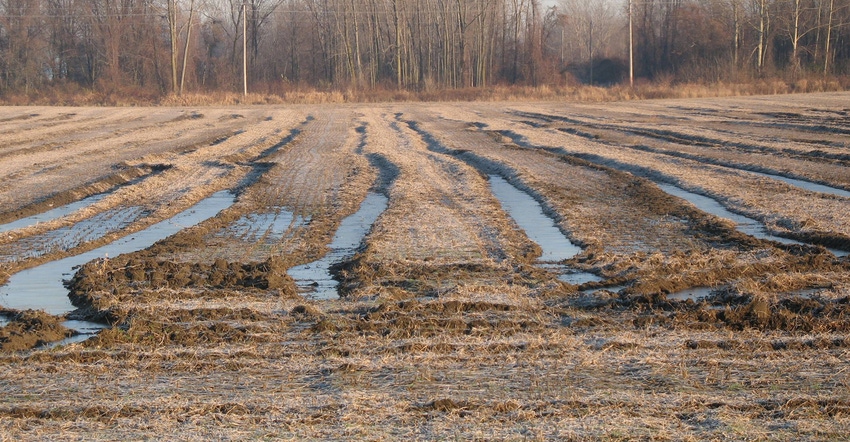November 6, 2018

By Michael Staton
According to the USDA National Agricultural Statistics Service, 35% of the Michigan soybean crop was still in the field as of Oct. 28. Given the calendar date and the projection for above-normal precipitation in the six- to 10-day weather outlook, harvesting these last fields may be a challenge for producers.
The following recommendations from Michigan State University Extension will help producers overcome these challenges:
• Let soil dry. Wait until the soil has dried enough to support the combine. Avoid cutting deep ruts, as these will fill with water and delay future field operations. Soil compaction associated with wet harvest conditions can also reduce crop yields for several years.
• Prepare cutter bar. The plants will be tough and difficult to cut, so it is critical to have the cutter bar in top condition. All knife sections should be sharp and tight, and all guards should be properly aligned to ensure optimum cutting. The gap between the sickle and the hold-downs should be about the thickness of a business card. Reducing your ground speed will also improve cutting and provide more uniform feeding into the combine. Harvesting on an angle to the rows should also improve feeding in row spacings greater than 15 inches.
• Check seeds’ moisture levels. The moisture content of the seed will also be high. In theory, soybeans can be harvested as long as the moisture is below 20%. Moisture testers and yield monitors are usually accurate when measuring soybean moisture. However, when soybeans are wet, Charles Hurburgh and Meaghan Andersen, Iowa State University Extension specialists, recommend checking your yield monitor or hand-held moisture meter against your grain buyer’s meter on at least three samples.
• Maintain proper threshing. Threshing and cleaning high moisture soybeans is challenging. Achieving uniform feeding and keeping the threshing cylinder and rotor full are the first steps to improving threshing. Draper heads and air-assisted reels will improve the uniformity of feeding. If threshing is not satisfactory, try reducing the concave clearance first. This may increase plugging problems at the cylinder or rotor if the straw is tough.
If plugging is a problem or unacceptable threshing occurs, increase the speed of the cylinder or rotor. Make incremental adjustments and check threshing performance and grain quality after each adjustment. It can be a balancing act to find the correct cylinder or rotor speed, and concave clearance settings that provide acceptable threshing without causing excessive split or crushed beans.
• Check for losses. Check for gathering losses at the head, because under normal conditions, 80% of all harvest losses occur at the head. However, when harvesting soybeans this late, the tough stems and pods and softer seed will probably increase threshing and cleaning losses, so checking your losses behind the combine becomes equally important. For every four beans per square foot found on the ground, 1 bushel per acre of yield is lost.
• Dry the beans. The wet beans will need to be dried or aerated immediately after harvest. Please see the MSU Extension article on drying and storing wet soybeans for recommendations.
If weather conditions do not improve, some producers leave beans in the field over the winter and harvest them in the spring. This is a risky practice. Wet, heavy snows can flatten the plants, making harvest difficult.
The risk of experiencing seed damage due to phomopsis is also increased with delayed harvest. The presence of phomopsis is confirmed if linear rows of black specks occur on the stem. If you see these signs and the pods are infected, damage to the seed can potentially occur. The good news is that the risk of soybeans sprouting in the pods is low, as long as the pods are intact and not open.
Producers that consistently harvest soybeans in November should consider planting earlier-maturing soybean varieties.
Staton is a Michigan State University Extension educator.
You May Also Like




